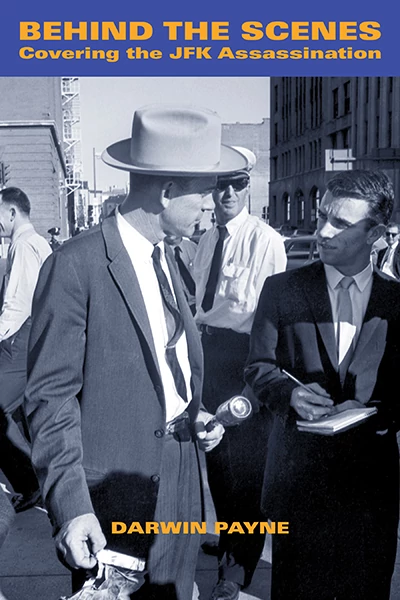Behind the Scenes: Covering the JFK Assassination

In-Depth Coverage of a Political Zeitgeist in Dallas
Payne’s memoir as a journalist covering the assassination of the late President John of Kennedy reads largely as a political history of Dallas and the role of news media to inform and influence political affiliations and behavior. Beginning with a summary of visits by United States presidents from Theodore Roosevelt’s in 1909 to JFK’s campaign visit in September 1960, Payne makes note of the political atmosphere of Dallas as observed in the reception of specific presidents and presidential candidates among its citizens over time.
As an example of the role of news media in shaping political attitudes, Payne recalls a startling incident whereby a group of young women, followers of then Republican Congressman Bruce Algers, attacked Lady Bird Johnson outside the Adolphus Hotel, which incident stands in stark contrast with the enthusiastic reception of Theodore Roosevelt’s visit in an earlier decade. Regarding the attack on Lady Bird, Payne not only ponders, “Where were the Democrats?” (p. 36), but also goes on to note: “Despite the negative publicity and its own criticism of the event, our politically moderate Times Herald endorsed Nixon as president; those were the orders from upstairs” (p. 38). Besides indicating the bias of the newspaper in question, the incident appears to suggest a shift toward a more Republican-oriented Dallas. Payne appears to point to the growing conservatism in Dallas by the early 1960s with his observation that John Birch Society was especially strong in Dallas” (p. 50).
In light of the perceived fervor of the conservative Republicans, Payne reports that anticipation of Kennedy’s campaign visit in September 1963 was wrought with the “fear that riotous right-wing extremists would spoil President Kennedy’s visit created the most angst-filled weeks in the city’s history” (pp. 67-68). Indeed, Payne observes presidential aide Ken O’Donnell stand up suddenly during the motorcade and announce that the president had been shot. When it is revealed that President Kennedy had been shot, Payne initially assumes that “surely ultrarightists had been the shooters, there was little question about that. Dallas’s newly aroused extremists had taken their hatred of President Kennedy to an unbelievable level” (p. 90).
Despite the Payne’s justifiable suspicion of the ‘ultrarightists,’ in the immediate moments after the assassination, he discredits the popular belief that Oswald did not act alone, and instead cites the “most lengthy and substantive history of the assassination” (p. 257) produced by Vincent Bugliosi, who “devoted two chapters to address and correct these mistaken beliefs” (ibid.). Both historians and journalism students will find a treasure trove of socio-political information and insights into the inner workings of the news media.
About the Reviewer
Sarah Tusa retired from her position as associate professor in the Mary & John Gray Library in June 2020. In her 30 years at Lamar University, Sarah published primarily in academic journals related to serials management and also served briefly as co-managing editor of Review of Texas Books.